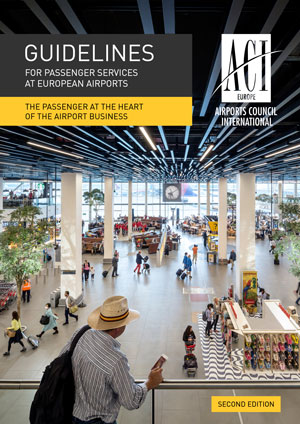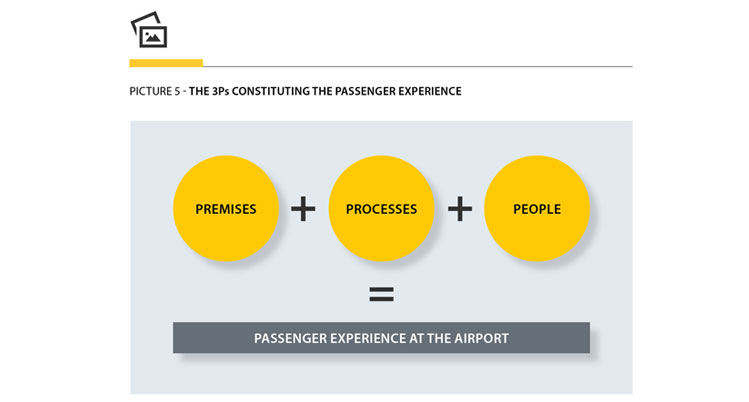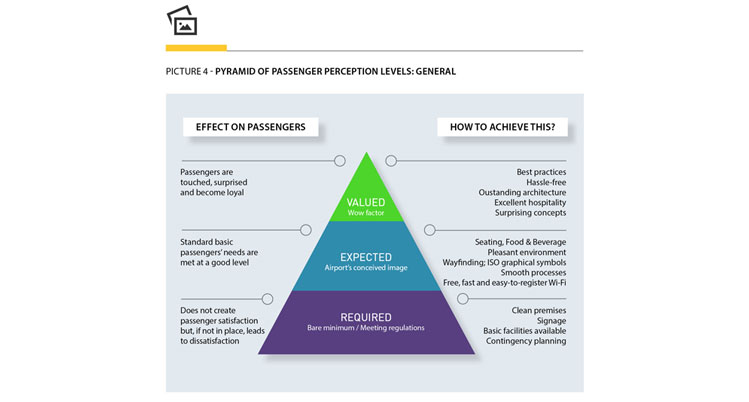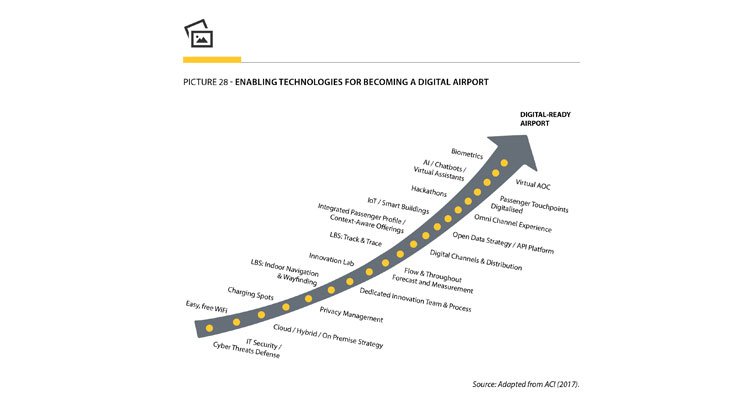To help airports to keep up to date with new passenger trends and to continue to excel in their services offer, ACI EUROPE developed a second edition of its hugely successful Guidelines for Passenger Services at European Airports. So what are the key concepts your airport should be exploring to take its passenger services to the next level? Inês Rebelo reports.

The second edition of ACI EUROPE’s Guidelines for Passenger Services at European Airports – launched at the joint ACI EUROPE & World Annual Congress, General Assembly & Exhibition in June in Brussels – provides airports with useful insights into new developments and trends in the airport industry and passengers’ behaviour.
Over the past two decades, Europe’s airports have placed the passenger at the heart of their business strategies. Now able to assert their focus as B-to-C businesses, airports know that passenger satisfaction is closely linked to a better business performance. So, they are investing in diversifying their services to enhance the passenger experience through efficient operations, engaging communications and inspiring commercial options. These efforts are reflected in the level of passenger satisfaction – and they are analysed and recognised by ACI World through the ACI Airport Service Quality (ASQ) benchmarking programme.
The second edition of ACI EUROPE’s Guidelines for Passenger Services at European Airports – launched at the joint ACI EUROPE & World Annual Congress, General Assembly & Exhibition in June in Brussels – provides airports with useful insights into new developments and trends in the airport industry and passengers’ behaviour.
Speaking at the launch, Dr Michael Kerkloh, President of ACI EUROPE and President and CEO of Munich Airport said “Some airlines would still like airports to be just a shed – nothing more. That certainly flies in the face of what consumers actually want and expect. In Europe, corporatisation and privatisation have transformed airports from mere infrastructure providers to multi-facet businesses in their own right – focused on quality, efficiency and the passenger.
Technology and digitalisation are now opening up exciting opportunities to deliver an integrated and much improved passenger experience. By increasing transparency and breaking operational silos between all partners – airports, airlines, ground handlers, Air Traffic Control, border & customs authorities and even surface access companies – technology and digital will allow us to put the passenger at the very heart of our processes.”
Customer service excellence requires constant evaluation and innovation. Airports have to adapt to passengers’ evolving needs and expectations. The Guidelines provide a clear methodology for doing this:
Passenger categorisation
A clear understanding of who your passengers are is essential to define the services your airport should offer.
3P Approach
Following on from the success of the first edition of these Guidelines, the 3 Ps (Premises, Processes and People) are now well established pillars of the passenger experience. Clean, appealing and functional premises with clear signage create a good ambience for passengers and can easily guide them through the airport. This should be combined with efficient and smooth processes (e.g. check-in, baggage drop-off, security and boarding) to make all the steps in the journey at the airport as smoothly as possible. The third important element is staff. Providing quick assistance to passengers, treating them with respect and engaging with them to inform or help will contribute to a pleasant passenger experience. Staff training and engagement is, thus, paramount.
The pyramid of passenger perception levels
Managing expectations is linked to understanding what really matters to passengers. Three levels of passenger perceptions (“required”, “expected” and “valued”) can be used as tools to set goals for your passenger services.
Quality management
As an essential element in the evolution from a B2B to a B2C approach, quality management includes stakeholder engagement, quality control and continuous improvement. For instance, instant feedback devices play a crucial role in informing your airport about the need to take immediate action regarding staff behaviour or the state of the premises.
New technology
Discover how the latest trends in technology (e.g. wearable devices, AI and biometrics) can help your airport enhance the efficiency of its operations and strengthen engagement with passengers. Becoming digitally-enabled means that your airport can offer a betterexperience to passengers through more personalised and efficient services in all steps of the journey.
Case studies
In the competitive landscape of the airport business, we often learn quickly from the successes of others. That’s why the new edition of the Guidelines contains extensive case studies of best practice in passenger services at various European airports, highlighting how some of the best in class are diversifying their service offer, livening up their interaction with passengers and embracing new ideas and collaborations, to better cater to the evolving needs and expectations of air travellers.

Following on from the success of the first edition of these Guidelines, the 3 Ps (Premises, Processes and People) are now well established pillars of the passenger experience.
Federico Bonaudi, ACI EUROPE Facilitation, Parliamentary Affairs & Regional Airports Manager, believes that these Guidelines will become a reference document for airports, like its first edition: “The passenger-facing aspect of the airport business is evolving rapidly. The second edition of the Guidelines for Passenger Services at European Airports is based on the methodology proposed by the first edition: the 3P Approach and the Pyramids of Passenger Perception levels, but we wanted to take into account the new developments and trends in the industry and share the knowledge gained. We revised all the chapters complementing them with subjects like data exchange, staff engagement, landside security and the future of baggage handling. We also added new chapters on Strategy and Quality control, as well as new case studies and testimonials. We hope this new edition of the Guidelines will be a useful source of inspiration for airports!”

Managing expectations is linked to understanding what really matters to passengers. Three levels of passenger perceptions (“required”, “expected” and “valued”) can be used as tools to set goals for your passenger services.
The publication was produced by the ACI EUROPE Taskforce on the Passenger Experience, managed by Federico Bonaudi, with the active participation of airports (Aeroporti di Roma, Bologna, SEA Milano, Munich, Swedavia, Zurich, Lyon and Nice Côte d’Azur) and ACI EUROPE World Business Partners (SITA and TH Airport Consulting).

Becoming digitally-enabled means that your airport can offer a better experience to passengers through more personalised and efficient services in all steps of the journey.
You can download the Guidelines at https://www.aci-europe.org/component/downloads/downloads/5591.html
If you would like to receive a hard copy, please email ines.rebelo@aci-europe.org







